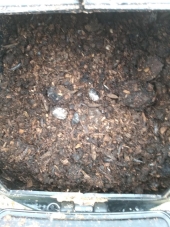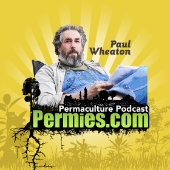Jc Alvarez wrote:Hello and welcome Kate.
I recently read Alan Booker's "Notes on Making Thermophilic Compost for the Garden or Homestead" and he suggests that you need quite a lot of material so that the pile gets hot enough - a minimum of 1 cubic meter. How do you store all the materials until you have enough? Do I need to create 3 big piles (greens, browns, and high Nitrogen) and then mix them all together when I have enough? Is it ok that they degrade while waiting to be mixed?
Thank you,
JC
Hi Jc,
Thanks for your question. Here's an edited extract from my book "You’ll need to pop on your compost-coloured glasses and go hunting for greens and browns because you need to stockpile enough ingredients to fill your compost bin all at once. This can be a bit tricky to manage when you have perishable scraps such as food waste. That’s why I love Bokashi bins – they give me an active place to store my household food waste while I’m gathering enough greens and browns for my latest batch of hot compost."
Hot Composting video
Here's another snippet you might find useful and will give you some food for thought about the required volume: "When you want to get hot, you have to go big – and I mean really big. The best pile size to ensure consistently hot compost is 1 metre x 1 metre x 1 metre, which is 1 cubic metre or 1000 litres of organic matter. Making a pile of this size works well for people with large gardens, but if you have a smaller yard and want to give hot composting a go, I’ll let you in on a little secret of mine: in my experience, home compost creators can have blisteringly hot compost with piles of less than 500 litres, if you nail the C:N ratio and add a compost activator. There is no doubt that it’s more challenging to create consistently hot compost in smaller volumes, but it’s definitely possible.
One thing to note is that volumes of less than 1000 litres don’t hold high temperatures for long because they don’t have the critical mass to become self-insulating. So, unless you’re confident in your hot composting ability, don’t add weeds that have gone to seed, diseased plant material or pernicious weeds to small hot compost piles. Your pile needs to reach 55–60 degrees Celsius for a minimum of three consecutive days, otherwise the weeds and diseases are not destroyed; they can then spread back into your soil via the finished compost. Not all batches cook enough when you first start experimenting with the hot compost method, and this can lead to compost heartbreak. So, when building your first hot compost pile, focus on adding disease-free plant matter and seedless weeds. This will allow you to enjoy the process and not stress about the results because, as you’ve learned earlier, lukewarm and slow (cold) composting are still kick-ass!"
It's totally fine if your greens and browns start to decompose, but make sure the piles of nitrogen do not become anaerobic.
I give detailed steps in my book about how to make hot compost in small and large batches. I hope you check it out.
Kate






